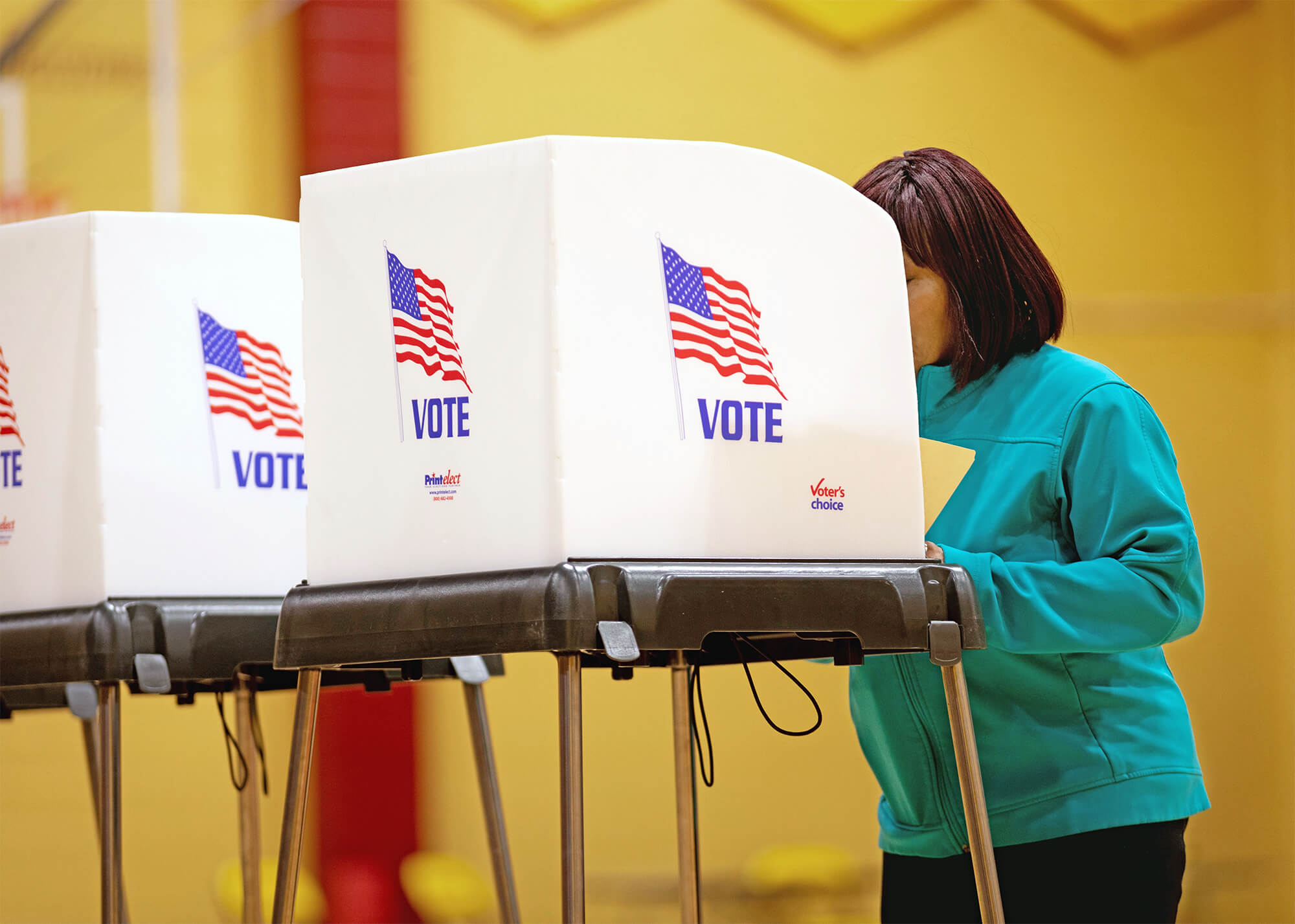In the News: Special Report
HIGH STAKES IN STATE, LOCAL RACES
From governors’ races to control of Congress to the way we vote, key races lurk down ballot

DEMOCRACY IS ON the ballot this fall. Literally.
It’s happening in Alaska and Arizona, California and Connecticut, Idaho and Iowa—and plenty of other states. In fact, whatever their views on the rematch between Donald Trump and Joe Biden, voters in this year’s election in those states and others will have a chance to weigh in on how future elections will be held.
In many ways, this cycle is a continuation of the 2022 midterm elections, when the normally sleepy office of secretary of state—generally the people who run elections—became one of the year’s hot tickets. There are fewer of those races this year, but more ballot measures that touch on the democratic process.
For voters, it’s another reminder that for all the attention the top of the ticket gets, much of their world is governed by what’s happening down ballot.
“A lot of the things that get decided at the federal level really are so distanced from the everyday of people’s lives,” says Bill Sweeney, AARP senior vice president for government affairs. “But the state-level elections are the ones that really have a huge, huge impact—especially in the space that we work in at AARP.”
That means issues such as boosting health care and long-term care access, increasing support for family caregivers, expanding platforms for retirement savings and corralling prescription drug costs. While federal policies play a role in those issues, it’s often governors and state legislatures that implement them.
Beyond that, state-level officials play a dominant role in some of the hot-button issues of our era, including abortion access, the voting process, education policy and gun rights.
In all, there will be 11 state governor races on the ballot, including high-profile ones in North Carolina and New Hampshire. (Two territories elect governors as well.) Also on statewide ballots will be seven secretaries of state and 10 attorneys general. In the U.S. Senate, 34 seats are up, and in the House, all of them are; included are several House races in districts with new boundaries since the 2022 election. And in statehouses around the country, nearly 5,800 legislative seats will be decided.
TWO WORLDS APART
All of this is happening as the country is both evenly divided and drifting apart.
Preference for Democrats and Republicans is virtually even among registered voters—49 percent to 48 percent, narrower than in any of the past seven presidential election years, according to the Pew Research Center. Democrats (and their allies) have a two-seat edge in the U.S. Senate; Republicans hold a five-seat advantage in the House. Among governors, Republicans have a four-seat edge when considering the 50 states—but throw in the American territories, and it’s dead even: 27 each (plus one independent), according to the National Governors Association.
Pretty tight.
At the same time, Americans’ views about the country—where it’s heading and what to do about it—are drifting further apart. Over the past two decades, data from Gallup finds that on a range of issues—such as the role of government power, education, abortion, gun laws, health care—the gaps between right and left have widened. And if you look at whom Americans send to Congress, researchers who track every vote by every member have found the average Republican and the average Democrat about as far apart as they have been in nearly 150 years. “However you define it,” says Sarah Binder, a political science professor at George Washington University in Washington, D.C., “polarization is on the rise.”
When they pull that lever, drop that envelope or punch that ballot, American voters will have a chance to tip the scales between these two political parties and the divergent worldviews they represent.
“A lot of the country is on a knife’s edge between the two parties,” Sweeney says.
CHOOSING HOW TO CHOOSE
It’s not just politicians voters will decide on. It’s also the political process itself.
“It’s important for people to be prepared and know what’s on their ballot before they get there,” says Michael Li, senior counsel for the Brennan Center for Justice’s Democracy Program, which is part of NYU Law.
Among the issues at play:
Ranked-choice voting: In four states—Nevada, Oregon, Alaska and Missouri—voters will address ranked-choice voting. In the first two, voters will decide whether to adopt a ranked-choice system, while Alaska voters will be asked if they want to ditch theirs. Missouri’s measure would prohibit it in the state. (That’s as of press time; the Alaska ballot measure is the subject of litigation; Colorado, Idaho and the District of Columbia may have ranked choice on their ballots.) Under one form of ranked-choice voting, all candidates—Republican, Democratic, other—run in the same primary, and the top vote-getters face off in the general election, when people rank their favorites. It’s intended to reduce polarization by favoring candidates who appeal to people on both sides of the aisle.
“Ranked-choice voting is responding to the frustration with the current political process and the lack of choice,” says Larry Jacobs, director of the Center for the Study of Politics and Governance at the University of Minnesota. The idea is to “put pressure on candidates to be less extreme,” he says.
According to FairVote, a nonprofit advocating for the system, 50 jurisdictions—two states, three counties, 45 cities—by early 2024 were using a form of ranked-choice voting.
No-excuse absentee voting: Voters in Connecticut will have a chance to vote on whether the General Assembly can enact no-excuse absentee voting, which would allow any voter to request a mail-in ballot without having to meet requirements such as declaring they are sick or going to be out of town. According to the National Conference of State Legislatures (NCSL), 28 states offer such voting, and eight other states and the District of Columbia conduct elections entirely by mail.
Noncitizen voting: As of June, half a dozen states have initiatives on the November ballot that, if passed, would declare that noncitizens can’t vote in elections in the state. Except in some municipal elections, noncitizens already can’t vote. But in Idaho, Iowa, Kentucky, Missouri, South Carolina and Wisconsin this fall, voters will be asked to confirm that the already-illegal act is illegal.
In the eyes of Charlie Cook, founder of the nonpartisan Cook Political Report and a leading elections analyst, some ballot measures are less about the issue at hand than the effect they will have on voters.
“A lot of the ballot initiatives now are sort of tools for parties to do things to jack up their turnout,” Cook says. On the right, that can mean measures on taxes or the voting process; on the left, it can mean abortion-related measures, which will be on the ballot in several states in November.
Among other election-related ballot measures is one in Arizona that would enshrine in the state constitution that partisan primaries be used for elections if the office is a partisan one; that’s already the state’s practice, but the amendment would make it harder to change the system down the road. And in California, voters will be asked to decide whether certain ballot measures would need to meet higher thresholds to pass.
The number of ballot measures likely will grow throughout the summer; as of mid-June, there were 101. Presidential election years back to 2004 have averaged more than 150 by Election Day, according to NCSL.
LEGISLATIVE BALANCE
Control of state governments is also at play, with the vast majority of state house seats and a majority of state senate seats up for grabs. Along with the governors, those lawmakers will have a role in deciding the issues—such as family caregiving, Social Security taxation, retirement savings options, high-speed internet access and Medicaid expansion—that could make people’s lives just a bit easier.
Nancy LeaMond, AARP executive vice president and chief advocacy and engagement officer, has been particularly struck by people’s retirement worries. “This notion of being able to save so that you’re not poor when you’re older and when you retire has gotten even more prominent,” she says.
Statehouses aren’t as close as Congress: Republicans control 28, Democrats 20, one is divided and one is nonpartisan. In eight states, one party has the governor’s mansion, the other both houses of the legislature. And a couple of big-state legislatures—Michigan and Pennsylvania—are right on that knife’s edge.
Because older voters turn out in a greater share than their younger counterparts, they’ll have a disproportionate impact on what should be an exceedingly close election year.
“When everything is this close, everything really matters,” says Khelan Bhatia, AARP voter engagement director.
Chris Adams is director of state news for the AARP Bulletin.


WHERE TO FIND STATE ELECTION INFO
Looking for reliable information on the candidates and issues appearing on your ballot this year? Here are six nonpartisan election resources that can help.
▶︎ AARP voter guides provide information on the voting process, from registration to Election Day poll hours. They cover 50 states, two territories and the District of Columbia. aarp.org/electionguides
▶︎ Ballotpedia features a tool (on the left, under Ballotpedia’s Sample Ballot) that allows users to enter their address to see the candidates and issues they’ll vote on in November. It includes information on individual races as well as relevant ballot measures. ballotpedia.org
▶︎ OpenSecrets rigorously details how money is raised and spent by candidates and political action committees—and who their donors are. opensecrets.org
▶︎ Vote411, from the League of Women Voters Education Fund, lets users enter an address to find information about their upcoming elections. Vote411 also offers information on statewide races, plus guides to help navigate the registration and voting process. vote411.org
▶︎ USA.gov, official website of the U.S. government, has resources and answers to common election-related questions, with detailed information on state and local voting procedures. usa.gov/voting-and-elections
▶︎ Vote Smart allows you to enter a politician’s name to find information, including voting record, past speeches, funding sources and interest-group ratings. Information on ballot measures and voter registration is under Navigation, then Elections & Candidates. votesmart.org